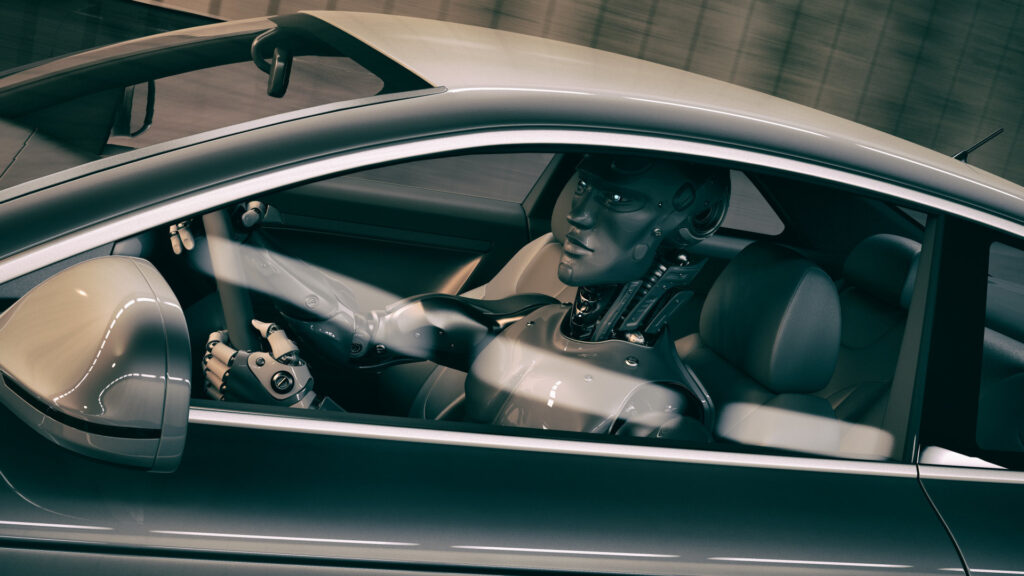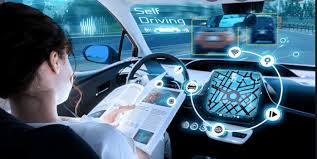
“Self-driven or driverless vehicles, or self-driving automobiles, are changing the transportation landscape. There is hope that these automobiles would improve road safety, productivity, and comfort. The robust integration of AI technology is the backbone of autonomous vehicles. Autonomous cars rely heavily on AI for navigation, perception, and decision-making. This article will go into the many applications of AI in self-driving automobiles, discussing their history, current state, and potential future.”
Introduction
In this piece of Article, we talk about the exciting new developments in driving car technology and how it could change the way we get around.
Based on analysis in the field of self-driving cars, we want to give you a complete review of the subject, focusing on the most important features, benefits, and problems of this new innovation.
What are Driverless Cars?
Self Driving or driverless vehicles, commonly referred to as driverless cars, are motor vehicles that are outfitted with sophisticated sensors, cameras, and artificial intelligence technology, allowing them to function and maneuver without the need for human intervention.
Advanced automobiles possess the capability to revolutionize the mode of transportation, providing better safety measures, heightened efficacy, and improved mobility.
The Benefits of Driverless Cars
Enhanced Safety for Self-driving Cars
One of the best things about self-driving or driverless cars is that they could cut the number of accidents on our roads by a lot. With their high-tech monitoring systems, driverless cars can find and react to possible dangers faster than people can, which reduces the chance of accidents. Also, getting rid of human mistakes like driving while busy or driving while tired can make roads a lot safer generally.
Increased Efficiency and Reduced Congestion for Self-driving Cars
Self-driving or driverless cars can talk to each other and work together, which will improve traffic flow and make our roads less crowded. By sharing data in real-time and planning smart routes, these cars can adapt to changing conditions, reducing journey time and making transportation more efficient as a whole.
Improved Accessibility for Self-driving Cars
Autonomous cars could make it easier for people with reduced movement to get around. By getting rid of the need for human drivers, driverless cars can give people who can’t drive standard cars a safe and easy way to get around. This includes people who are older, have challenges or don’t have a driver’s license.
The Technology Behind Driverless Cars
Sensors and Perception Systems
Self-driving or driverless cars use a complex set of sensors and vision systems to gather information about their surroundings and figure out what it all means. Some of these sensors are radar, cameras, sound sensors, and LiDAR (Light Detection and Ranging). By analyzing this data in real-time, autonomous cars can correctly find items, people, road signs, and traffic signals, allowing for safe navigation.
Artificial Intelligence and Machine Learning are being used for Self-driving or driverless cars
The artificial intelligence (AI) systems of driverless cars are responsible for their operational functionality. The sophisticated algorithms are capable of efficiently analyzing copious amounts of sensor data, rendering informed decisions, and regulating the vehicle’s operations.
The utilization of machine learning methods is of paramount importance in the training of artificial intelligence models, enabling vehicles to enhance their driving capabilities through exposure to diverse scenarios and accumulated experience.
Connectivity and Communication for Self-driving Cars
Self-driving or driverless vehicles are a constituent element of a broader system that depends on uninterrupted connectivity and communication infrastructure.
Autonomous vehicles have the capability to exchange crucial information with each other and traffic management systems via vehicle-to-vehicle (V2V) and vehicle-to-infrastructure (V2I) communication. This allows them to adjust to dynamic traffic conditions, manoeuvre intricate situations, and guarantee the safety and effectiveness of the transportation system as a whole.
How do Self-driving or driverless cars drive themselves?
Self-driving or driverless cars use AI. Image recognition data, machine learning, and neural networks are used to develop self-driving automobiles.
Neural networks find data patterns for machine learning techniques. The neural network learns to recognize traffic signals, trees, curbs, pedestrians, street signs, and other driving elements using photos from self-driving car cameras.
Waymo, Google’s self-driving car project, uses sensors, lidar (light detection and ranging), and cameras to identify objects around the vehicle and predict their behavior. In milliseconds. Systems need maturity. More driving data allows the system’s deep learning algorithms to make more complex driving decisions.
Waymo car function as follows:
- Driver or passenger chooses the destination. Car software plots a path.
- A revolving roof-mounted Lidar sensor provides a live 3D representation of the car’s environment within 60 meters.
- A sensor on the left rear tire tracks sideways movement to determine the car’s 3D map location.
- Front and rear bumper radars measure obstacle distances.
- Google Street View and automobile cameras feed the car’s AI software.
- Deep learning models human perception and decision-making and regulates driving control systems like steering and brakes.
- Google Maps alerts the automobile to landmarks, traffic signs, and lights.
- An override function lets humans operate the vehicle.
The Challenges and Considerations
Legal and Regulatory Frameworks for Self-driving Cars
As with any new technology that changes the way things are done, the broad use of robotic cars will require the creation of clear laws and rules.
Policymakers and authorities must deal with important issues like who is responsible in case of an accident, the safety and security of data, and how to integrate self-driving cars into current transportation systems.
Ethical Dilemmas for Self-driving Cars
Vehicles capable of driving themselves provide difficult moral conundrums that require serious examination.
For example, in the event that an accident cannot be avoided, the question arises as to how the automobile should prioritize the safety of its occupants in comparison to the safety of pedestrians or other cars.
To ensure a just and responsible approach to the rollout of autonomous cars, resolving such ethical difficulties will require a combined effort by legislators, ethicists, and engineers. This will be necessary in order to achieve a solution.
The Future of Transportation for Self-driving Cars
The introduction of fully autonomous vehicles is a momentous occasion in the annals of transportation history.
We predict a future in which autonomous cars will be integrated into our everyday lives without causing any disruptions, as technology will continue to advance and regulatory frameworks will continue to adapt. This transformation has the potential to reimagine urban design, lessen the impact that we have on the environment, and alter the way that we think about mobility.
Conclusion

In the end, driverless cars are a game-changing idea that could make transportation safer, more efficient, and more available.
Self-driving cars are going to change the way we move because of improvements in sensor technology, artificial intelligence, and connection. Even though there are still problems, if business leaders, lawmakers, and the rest of society keep working together, it will pave the way for a future where driverless cars are everywhere.
It is imperative to acknowledge that the advent of a driverless world is imminent, as evidenced by the ongoing journey toward its realization.
Disclaimer
This article’s contents are provided for educational purposes only and should not be construed as legal, financial, or professional advice. Before making any decisions regarding automated automobiles or autonomous vehicles, consult the appropriate authorities and experts.
FAQ: How do self-driving cars use AI?
Artificial intelligence algorithms are used in autonomous vehicles’ perception, decision-making, and control systems.
Thanks to AI, these vehicles can drive themselves, with no human intervention required.
FAQ: What are the main challenges facing AI in self-driving cars?
The biggest hurdles for AI in self-driving cars are making sure algorithms are reliable and robust, dealing with social and legal issues, lowering costs, and building infrastructure to support AI.
Self-driving cars can’t become widely used until these problems are solved.
FAQ: Are self-driving cars safe?
It is possible that automobiles that drive themselves will be safer on the road than cars operated by humans.
Systems that are powered by AI are able to analyze data from a variety of sensors, come to choices in a split second, and reduce risks. However, in order to ensure that self-driving cars are safe, there needs to be extensive testing, as well as algorithms that are reliable and regulatory safeguards.
FAQ: Can self-driving cars replace human drivers entirely?
It is unlikely that self-driving cars will completely replace human drivers in the near future, despite their potential to automate driving responsibilities.
Nevertheless, autonomous driving technology can assist human drivers, enhance safety, and provide convenience in certain situations.
FAQ: How does AI help improve the efficiency of self-driving cars?
Artificial Intelligence (AI) plays a crucial role in enhancing the effectiveness of autonomous vehicles by optimizing traffic patterns, minimizing traffic congestion, and selecting the most efficient routes.
Artificial intelligence (AI) algorithms possess the capability to analyze real-time data, render informed decisions, and collaborate with other vehicles to facilitate seamless and optimized driving.
